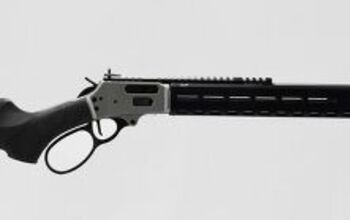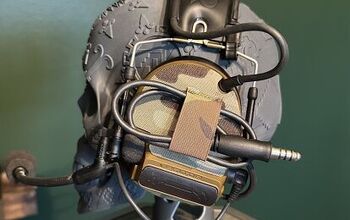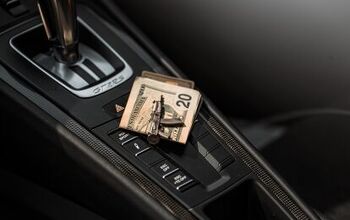The Quest For The Low Bore Axis: Rideout Arsenal Dragon from the USA

In recent years, we’ve covered quite a few pistol models featuring a bore axis well below the average height. We’ve seen prototypes from all over the world, but if we exclude the resurrected P7 by P7Pro, all commercial models come from Europe. Rideout Arsenal, with the Dragon, is here to change the balance, with a 100% American product. Let’s dive together into its innovative features.
More on Low Bore Axis @ TFB
- A NEW Low-Bore-Axis Laugo Alien-type Pistol: The OPOS Venator
- Laugo Arms Releases the Alien Remus Concealed Carry Pistol
- The Quest for The Low Bore Axis – Magnum Edition – The Wildebeest from Down Under
- [IWA 2022] Revo Arms from Italy Debuts the IS-9 Striker-Fired Pistol
- The Quest For The Low Bore Axis: A Novel Italian Approach
- The Quest For The Low Bore Axis
Rideout Arsenal - The Dragon’s Origin
Rideout Arsenal is a young manufacturing company based in Virginia, USA. Travis Rideout, founder & CEO, is an experienced mechanical engineer who spent several years designing robotics equipment and vehicles for a large defense contractor. While honing his designing and engineering skills in his 9-to-5 role, Travis also gained valuable insights into manufacturing processes. This experience, together with a healthy passion for machining and no concern for burning the midnight oil, set the basis for the Dragon development over 10 years ago.
As of 2016, Travis had a fully functional prototype, already sporting the majority of the features we’ll soon explore. It was very flat shooting thanks to the lowest bore axis of any known pistol and a smooth operation, accomplished with a gas-delayed blowback action. Does this remind you of anything?
When smart people independently tackle the same problem, they may come up with very similar solutions. The release of the Laugo Alien sent Travis back to the drawing board: the Dragon wasn’t meant to be labeled as the American interpretation of a European model, but recognized as a 100% original design.
This obstacle on the development path allowed Travis to examine the downsides of the gas-delayed operation (heat build-up, fouling) and experiment with new solutions, while maintaining the overall pistol architecture.
The years post-Alien have seen prototypes with locked breech and gas operation (think Wildey or Desert Eagle), roller-locked and roller-delayed blowback. All had advantages and disadvantages, with the roller-delayed solution checking a lot of boxes but resulting in an overly wide bolt carrier (think slide, for the moment).
With the idea that a pistol using a fixed barrel and a retardation system based on mechanical disadvantage was the best solution, Travis ditched the rather cumbersome rollers in favor of a lever delay. This is a mechanically simple design that requires careful optimization and manufacturing to function properly; therefore, it’s quite uncommon in modern, mass-produced pistols. We can recall the rather obscure Hogue Avenger pistol and the more famous FAMAS assault rifle as examples of this approach.
The lever delay mechanism got its fair share of prototypes, and it was optimized to have a wide range of reliable operation with 9x19mm commercial loads, from subsonic rounds to the hottest +P+ rounds.
Enter The Dragon
Saying that the Rideout Arsenal Dragon is a 9mm Luger single action only competition pistol with extremely low bore axis and lever-delayed blowback operation, tells only a bit of the story.
While the Dragon keeps the familiar form factor of any semi-auto pistol, if only with an extended beavertail, the whole package is radically different from any other handgun on the market.
The Dragon is fully ambidextrous in features and controls, and fully manufactured, in-house at Rideout Arsenal, in metal. Let’s do a “mag dump” of all the details (many patent pending) that differentiate this model from the market.
The pistol has no conventional slide, yet it can be racked by acting on the front reciprocating element, the bolt carrier, or on the Non-Reciprocating Optic Carrier (N-ROC) sitting over the extended beavertail. As the name implies, the N-ROC keeps the rear sight steady during firing.
Within the frame, only partially exposed, sits the 4140 steel bolt, which looks closer to a rifle component than to a pistol one.
There’s no traditional hammer, nor a traditional striker, but a linear hammer that acts on a firing pin, which slides on an axis offset from the one of the hammer. The linear hammer can be released by the sear only if the trigger safety is fully depressed, the bolt carrier is in the closed position and, of course, the trigger is pulled.
The barrel has a square section, it’s fixed within the frame and held in place by a front piece, called “the nose”, which interfaces with the barrel via a tri-lug connection, designed to be asymmetrical so it can be consistently assembled only in its correct orientation. The nose houses the front sight, again fixed during firing.
The fully ambidextrous nature of the pistol required a magazine with a notch for the catch on the front face and as high as possible; the magazine of the Springfield Echelon offered these features. So, good news, no proprietary magazine!
The 7075 aluminum frame is actually 4 pieces, plus a removable magwell, and the only serialized portion, the actual firearm from a legal point of view, is the fire control group tightly packaged in the trigger guard. The dust cover portion has a bottom Picatinny rail and “gas pedal” ramps on both sides. Full disassembly and reassembly require no tools.
With the help of some photos, we can see these points a little more clearly, and the video at the end of this chapter offers further, valuable insights.
TECHNICAL SPECIFICATIONS:
Caliber | 9x19mm |
Barrel Length | 5” |
Dimensions | L 9.1″ x H 5.9″ x W 1.1″ (W 1.4” @ Thumb Rest) |
Weight | 33.9 oz / 961 g |
Trigger Pull Weight | 2.5-3.0 lbs |
Capacity | 17 / 20 +1 Rounds |
Steel Finish | DLC - Black |
Aluminum Finish | Type III Hardcoat, Burnt Bronze Color |
N-ROC Footprint | RMR |
Sight Radius | 8.75” |
Rideout Arsenal Dragon - Price and Availability
The Rideout Arsenal Dragon is currently available for pre-order as a First Edition package, limited to 100 samples. This kit doesn’t simply include the pistol, but it’s a full set offering the customer the chance of hitting the range from the get-go (ammo and skills not included).
FIRST EDITION FULL KIT INCLUDES:
- Custom Pelican Hard Case
- Trijicon SRO
- Race Holster
- 5x Magazines (3x20rd, 2x17rd)
- Otis Cleaning Kit
- Gun Butter 1oz Needler Oiler
- Maglula UpLULA Speed Loader
- Cable Lock
- Owners Manual
- Certificate of Authenticity
- Matching Serialized Challenge Coin
The price for this kit is $5,200, with delivery within 6 to 9 months (Q1 to Q2 2026), and apparently, these 100 units are running out fast. Manufacturing of the first batches is starting in these weeks.
Rideout Arsenal Dragon - Future Plans
While the First Edition is meant to kickstart the full-scale manufacturing of the Dragon, it is not going to release the full potential of the modular platform. When the production run hits the market, it will start offering a range of possible customizations, starting with grip modules and sights.
The production model is expected to carry a $3,600 price tag; still not going to replace a polymer striker-fired pistol in anyone’s collection, but an interesting option for those currently running high-grade 2011-style competition models.
While the production model will be the Dragon as we see it, a competition-oriented 9x19mm handgun, the modularity allowed by the removable FCG opens a lot of potential and we can fully expect Rideout Arsenal to capitalize on it.
Conclusions
It’s always worth celebrating when something truly new hits the market. And it’s even more fascinating if it’s the realization of the dream of dedicated, hard-working individuals. We know that the market can be really challenging, but from our preliminary interaction, it looks like Rideout Arsenal have the right cards to carve a niche for themselves and grow within it. And we wish them so.
What do you think of this development? Would you consider this option if you were on the market for a high-end race pistol? Where would you like to see this fire control group and action employed? As usual, let us know in the comments.
All images courtesy of Rideout Arsenal

Italian firearm enthusiast, Giorgio has a passion for innovative or plainly unusual mechanical solutions. He's also interested in manufacturing technologies with a recent focus on additive manufacturing.You can contact him at giorgio_o at zoho dot com and you'll find him in the comments section as Giolli Joker.
More by Giorgio O






































Comments
Join the conversation
I've got several low bore axis pistols, but I'm hard-pressed to notice the difference in recoil, rise, and recovery time between shots. It may be quantifiable, but is it worth the cost? For hunting, plinking, and defensive, I would say no. For competition, any advantage is a plus. I do like the modular simplicity of the design and the fact you don't need any tools to disassemble it. If it proves successful, perhaps a budget carry model and different caliber options will be forthcoming. Now, if only they could do something about its looks . . .
Time will tell. But yes, the innovation and engineering that went into this project is phenomenal. I would lay down the five grans, but support is crucial. What makes 1911 and Glock so popular is after market.